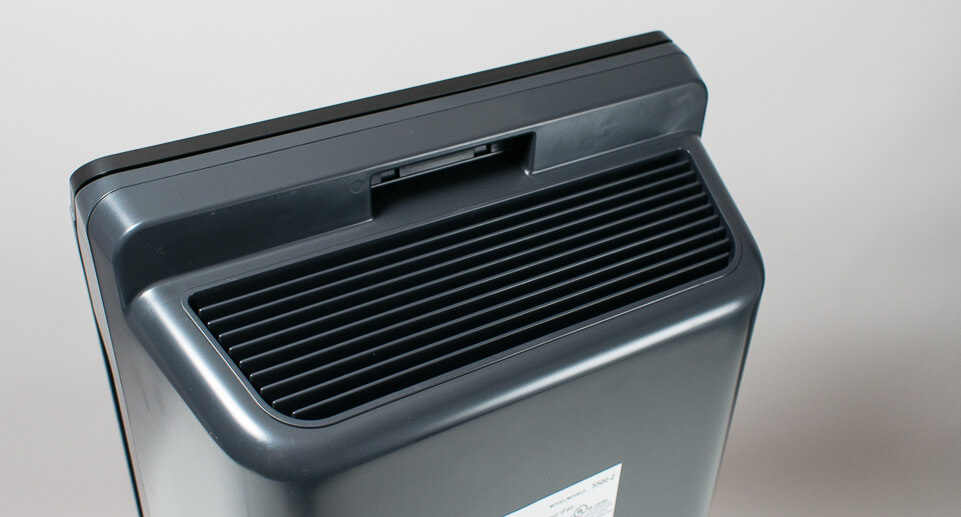ACH

ACH stands for Air Changes per Hour. Imagine a room filled with air. 1 ACH equates to “changing” all of the air in that room once in an hour.
“Changing” in this case simply means processing the air. The air purifier intakes air, puts it through a filter, and then outputs the air. If an air purifier can process or “change” all of the air in a particular room once per hour it has an ACH of 1 for that room. Twice per hour? ACH of 2. Four times per hour? ACH of 4.
The 4 ACH myth
Most consumer publications recommend an ACH of 4 – four air changes per hour – for most applications. This is, for the most part, based on ASHRAE’sACH recommendation for hospital rooms.
| Room type | ACH |
|---|---|
| Hospital rooms | 4 |
| Intensive care units | 6 |
| Operating rooms | 25 |
Source: ASHRAE (The American Society of Heating, Refrigerating and Air-Conditioning Engineers) ACH recommendations for hospitals
We disagree with the basis of this recommendation for two reasons
1. The ASHRAE ACH recommendation takes into account total ventilation – not just ventilation provided by HEPA filtration. In other words, this recommendation does not assume or even expect the use of an air purifier as the primary means of ventilation/ air changing.
Just like your home, a hospital room needs to be heated or cooled. Most hospitals have an HVAC system installed much like your home does – just on a much larger scale. This HVAC system implements the use of lower MERV air filters – not quite HEPA but air filters that will lower certain particle concentration nonetheless.
The HVAC system contributes greatly to the total ACH in any particular hospital room.
2. Yes, many hospital rooms and especially operating rooms implement HEPA filtration just like many air purifiers. But HEPA filtration implementation in a hospital room differs greatly from what you’ll end up doing in your home (with an air purifier).
HEPA filtration in operating rooms involve
- a single, small, sealed room
- multiple air supply sources - multiple (as many as 6, 7+) diffusers above the patient
- multiple returns - multiple (typically at least 2 or 3) low returns in the corners OR on opposite sides of the room
All of this in combination facilitates the high ACH required for such rooms.
One air purifier - with a single supply and return right next to each other on the unit - sitting on the ground in an unsealed room in your house has a much more difficult time providing high ACH levels, which is all the more reason why we do not recommend you consider ACH when evaluating air purifiers.
We also don’t recommend stringent ACH guidelines because…
-
Your home is a chaotic environment:
-
Contaminants are constantly being introduced into the air
– a wet dog, cooking different foods, doing the laundry – all of these things and more introduce particles that affect the ideal ACH at any particular moment
-
People/animals are constantly moving in and out of rooms, over carpets, onto furniture, even opening/closing curtains
– all of these activities disturb particles and affect the ideal ACH at any particular moment
-
-
In addition, ventilation in a room (and therefore ideal ACH) is very difficult to judge:
-
In rooms without doors
– i.e. rooms that can’t be sealed off
-
When doors/windows are opened and closed
-
And especially when your HVAC system is running
– whether its heating or cooling or you’re simply running the fan – the HVAC system is constantly ventilating which has a direct impact on ACH
-
Our recommendation
Don’t use ACH. Use CFM – the cubic feet (volume) of air the air purifier can process each minute - instead.
Depending on whether
- The room is sealed or not
- Doors are opening/closing
- The number of people/pets in the room
- The amount of activity in the room
- The room is also being heated/cooled by an HVAC system, etc.
The exact ACH will vary and the required ACH will vary.
Focus instead on a single variable that you can control - the actual air processing power (CFM) of the air purifier.
Specifically, look for a 250 CFM unit for almost all applications. Such units offer a unique combination of value, energy efficiency, and low noise output.
A 250 CFM unit will offer sufficient CFM for rooms up to 300 sq. ft. (according to our testing). If an air purifier is needed for a larger space, multiple 250 CFM units are recommended. If an air purifier is needed for a smaller space a 250 CFM unit is still recommended, although you can run it at lower fan speeds in such a space.
Add a Comment
Have a question or comment? Let us know below.

Comments